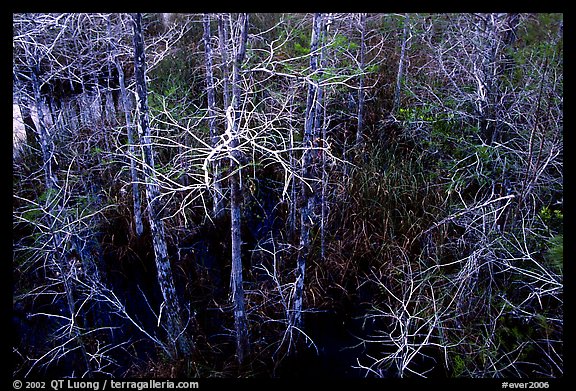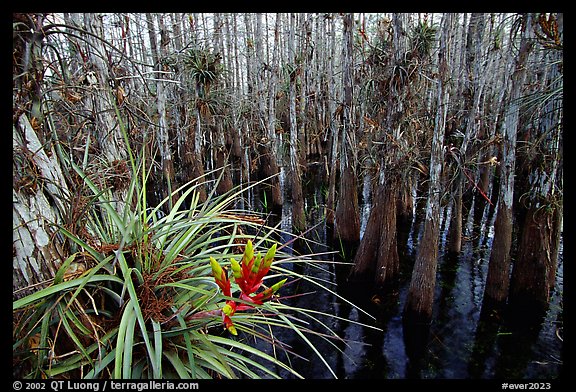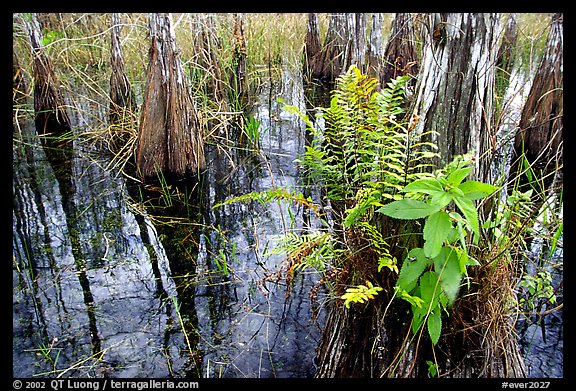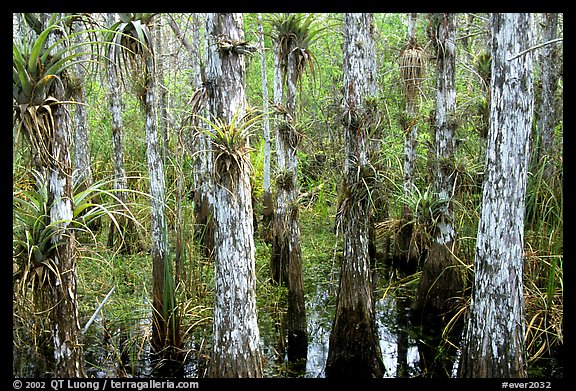Photo Spot 35: Everglades National Park – Pa-hay-okee cypress domes
One Comment
On my first visit to Everglades National Park, I focused on the wildlife, the wading birds and alligators. Nowhere else in North America are the birds that diverse, abundant and easy to observe and photograph along one of the parks famous boardwalk trails.
The scenery at first appeared flat and monotonous, so I was content to find a few locations over water to photographs sunrises and sunset. However, as I took the more careful perspective of a landscape photographer, I recognized a variety of ecosystems that includes marshes, sawgrass prairies, pine forests, tropical hammocks, mangrove swamps, coastal beaches, and cypress domes. In this post, I will concentrate on the latter, since I believe that they offer one of the most unusual experiences in the National Parks, yet one which is accessible to almost everybody.
I first walked up the Pa-hay-okee observation tower to survey the swamp. Cypress are one of the most unique trees in the South, as they grow out of the water, forming swamp forests, called “cypress dome”. The term, “cypress dome” refers to the phenomenon that the larger cypress grow in the middle of the dome, and then get progressively smaller as one goes out from the center. The conditions for growth are more favorable in the center as opposed to the edges. Pa-hay-okee is the area of the park where many of the cypress domes grow.
Next, I picked up at random a nearby cypress dome, and parked on the side of the road at an unmarked spot. From a distance, the cypress dome looked like regular woods. As I stepped tentatively into the water of the “river of grass”, wearing long pants against the sharp blades of the appropriately named sawgrass, I was surprised to feel a solid ground underneath my feet, instead the mud I was expecting. I was walking directly on the hard underlying limestone bedrock of the Everglades, although I couldn’t see my feet through the dark water.
After a few hundred yards, as I began to get used to this strange feeling of “wet hiking”, I walked with more confidence. By that time, the road was no longer in sight. Instead, I was surrounded by a dense cypress forest rising from black water. As it was winter, the branches were bare of leaves, yet the trees were covered with bromeliads and orchids. Such a beauty and lushness just couldn’t have been anticipated from outside the dome. Although it has been only a short time, I felt like I was the only human being to have ever set foot on that primeval patch of water-covered ground.
Working from a shoulder bag, I set up my tripod in the water and began photographing. The overcast morning that I chose provided even illumination in the swamp, but I was careful not to include the overly bright sky in the images.
Everglades National Park is best enjoyed during the dry season, in winter. Although summer brings out dramatic thunderstorms clouds, the high temperatures, humidity, and mosquitoes make it uncomfortable. If you are hesitant to venture by yourself into the swamp, the rangers organize regularly guided walks. Do not miss such a unique experience, hidden to most visitors, although so close !




View all images of Everglades National Park
view images of cypress in Everglades


No comments?
Amazing to see the bromeliads hanging naturally from the cypress trees. This is the kind of landscape photography that separates the men from the boys. Not many people would be willing to wade through swamp!